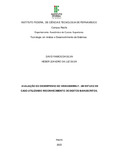| dc.relation | ANDREASEN, E. et al. A Survey of Dynamic Analysis and Test Generation for JavaScript. ACM Comput. ACM Computing Surveys, 2017.
BACKES, A. R.; JUNIOR, J. J. d. M. S. Introdução à visão computacional usando Matlab. [S.l.]: Alta Books Editora, 2019.
BALLARD, D. H.; BROWN, C. M. Computer vision. [S.l.]: Prentice Hall, 1982. BODILY, Samuel. (2009). Browser Wars: Microsoft Versus Netscape. Darden Business Publishing Cases. 1. 10.1108/case.darden.2016.000053. BRINKMANN, Ron. The Art and Science of Digital Compositing: Techniques for Visual Effects, Animations and Motion Graphics. 2 edição. San Francisco: Morgan Kaufmann Publishers. 2008.
CLARK, Lin. A crash course in Just-in-Time (JIT) compilers. [S.l.].2017. Mozilla Hacks. Disponível em: <https://hacks.mozilla.org/2017/02/a-crash-course-in- just-in-time-jit-compilers>. Acesso em: 23 de fev. 2022.
CLARK, Lin. Creating and working with webassembly modules. [S.l.]. 2017. Mozilla Hacks. Disponível em: <https://hacks.mozilla.org/2017/02/creating-and- working-with-webas sembly-modules/>. Acesso em: 29 de jun. 2022.
CLARK, Lin. What makes webassembly fast?. [S.l.]. 2017. Mozilla Hacks. Disponível em: <https://hacks.mozilla.org/2017/02/what-makes-webassembly-fast/>. Acesso em: 23 de fev. 2022.
COHEN, Omri. Go webassembly performance benchmark. [S.l.]. 2020. Code the Cloud. Disponível em: <https://dev.bitolog.com/go-webassembly-performance- benchmark/>. Acesso em: 30 de jun. 2022.
CUNHA, Luiz Henrique da Silva. Avaliação de desempenho de visão computacional em aplicações móveis. 2018. 60 f. Monografia (Graduação em Engenharia da Computação) – Instituto de Ciências Exatas e Aplicadas, Universidade Federal de Ouro Preto, João Monlevade, 2018.
DE ALBUQUERQUE, Márcio Portes; DE ALBUQUERQUE, Marcelo Portes. Processamento de imagens: métodos e análises. Rio de Janeiro, Brasil, v. 12, 2000.
EICHNER, Hubert. 2014. MYSELPH. Disponível em: <http://myselph.de/neuralNet.html>. Acesso em 23 de fev. 2022.
EMSCRIPTEN, Contributors. Emscripten compiler toolchain. [S.l.]. 2015 Emscripten. Disponível em: <https://emscripten.org/> Acesso em: 25 de jun. 2022.
EMSCRIPTEN. Building to Webassembly. [S.I.] 2015. Emscripten. Disponível em: <https://emscripten.org/docs/compiling/WebAssembly.html#webassembly>. Acesso em 24 de ago. de 2022.
GATTALl, Abdeljalil & CHIBANI, Youcef. Combining Multiple Segmentation Methods for Handwritten Digit Recognition of Algerian Bank Checks. 2nd International Conference on Information Systems and Technologie, 2012.
GONZALEZ, R. C.; WOODS, R. C. Processamento digital de imagens. Pearson Prentice Hall, 2010.
GOODFELLOW, Ian; BENGIO, Yoshua; COURVILLE, Aaron. Deep Learning (Adaptive Computation and Machine Learning series). Massachusetts Institute of Technology Press. 2016.
HINKELMANN, Franziska. Understanding V8’s bytecode. [S.l.]. 2017. Franziska Hinkelmann. Disponível em: <https://www.fhinkel.rocks/2017/08/16/Understanding -V8-s-Bytecode> Acesso em: 25 de jun. 2022. ITU, ITURBT. Parameter values for the HDTV standards for production and international programme exchange. Recommendation ITU-R BT 709-5. 2002.
JANETAKIS, Nick. Was web development better back in the early 2000s?. [S.l.]. 2018. Nick Janetakis. Disponível em: <https://nickjanetakis.com/blog/was-web- development-better -back -in-the-early-2000s>. Acesso em: 16 de jan. 2022.
KWAME, Ampomah Ernest; MARTEY, Ezekiel Mensah; CHRIS, Abilimi Gilbert. Qualitative assessment of compiled, interpreted and hybrid programming languages. Communications, v. 7, n. 7, p. 8-13, 2017.
LECUN, Y; CORTES, C.; BURGES, C.J.C. The MNIST database of Handwritten Digits. New York, USA. 1998.
MOZILLA. Javascript, Origem e História. [S.l.]. 2016?. MDN Web Docs. Disponível em: <https: //developer.mozilla.org/pt-BR/docs/Glossary/JavaScript>. Acesso em: 24 de jan. 2022.
MOZILLA. Understanding webassembly text format. [S.l.]. 2017?.MDN Web Docs. Disponível em: <https://developer.mozilla.org/pt-BR/docs/WebAssembly/Understandi ng_the_text_format>. Acesso em: 30 de jun. 2022.
MOZILLA. Webassembly format. [S.l.]. 2017?. MDN Web Docs. Disponível em: <https://research.mozilla.org/webassembly>. Acesso em: 23 de fev. 2022.
MOZILLA. Performace.now() method. [S.l]. 2015?. MDN Web Docs. Disponível em: <https://developer.mozilla.org/en-US/docs/Web/API/Performance/now>. Acesso em: 02 de mai. 2023. OCARIZA, F. et al. An Empirical Study of Client-Side JavaScript Bugs. IEEE International Symposium on Empirical Software Engineering and Measurement, 2013. OLUWATOSIN, H. S. Client-Server Model. IOSR Journal of Computer Engineering, 2014.
OSMANI, Addy. Javascript Start-up Optimization. [S.l.]. 2017. Web.dev. Disponível em: <https://web.dev/optimizing-content-efficiency-javascript- startup-optimization/>. Acesso em: 30 de mar. 2022.
OTSU, N. A Threshold Selection Method from Gray-Level Histograms. IEEE Transactions on Systems, Man, and Cybernetics, vol. 9, no. 1, pp. 62-66, Jan. 1979, doi: 10.1109/TSMC.1979.4310076.
PARKKINEN, Jaana; HAUKIJÄRVI, Mikko; NENONEN, Petri. A fast method for scaling color images. 17th European Signal Processing Conference (EUSIPCO). 2009
RAJU, P. D. R.; NEELIMA, G. Image segmentation by using histogram thresholding. International Journal of Computer Science Engineering and Technology, v. 2, n. 1, p. 776-779, 2012.
SARAVANA, C. Color Image to Grayscale Image Conversion. 2010 Second International Conference on Computer Engineering and Applications, 2010, pp. 196-199, doi: 10.1109/ICCEA.2010.192.
SURMA, Das. Is webassembly magic performance pixie dust?. [S.l.]. 2021. Surma.dev. Disponível em: <https://surma.dev/things/js-to-asc/index.html>. Acesso em: 30 de jun. 2022.
WHATWG. The canvas element. [S.I.] 2022. HTML Spec WHATWG. Disponível em: <https://html.spec.whatwg.org/multipage/canvas.html#the-canvas-element>. Acesso em: 24 de ago. de 2022.
WILEY, Victor; LUCAS, Thomas. Computer vision and image processing: a paper review. International Journal of Artificial Intelligence Research, 2018.
YOUSEFI, J. Image binarization using otsu thresholding algorithm. Ontario, Canada: University of Guelph, 2011. | pt_BR |


